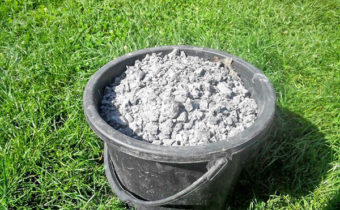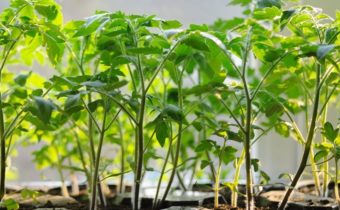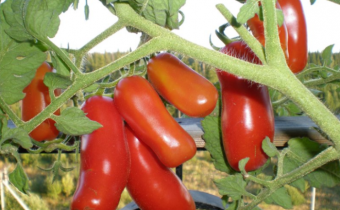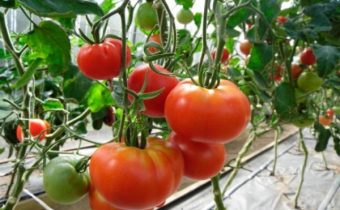Ash as a fertilizer for tomatoes, gardeners reviews
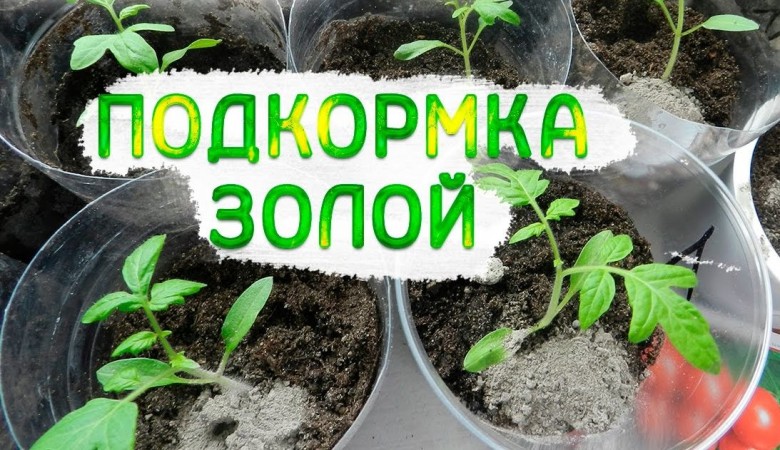
The physicochemical parameters of the ash vary with the substances used for its production. Received widespread in gardening due to the increased level of nutrient content. It is scientifically proven that they increase the immunity of tomatoes and accelerate their growth. The key to obtaining a good harvest will be held top dressing tomato ash in a greenhouse of polycarbonate and open ground.
What is the use of ash
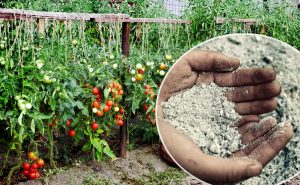 One of the reasons for the active use is insignificant cost with a significant level of concentration of the beneficial substances listed below.
One of the reasons for the active use is insignificant cost with a significant level of concentration of the beneficial substances listed below.
Namely:
- calcium carbonate;
- calcium silicate;
- calcium sulphate;
- calcium chloride;
- sodium orthophosphate;
- sodium chloride;
- magnesium carbonate;
- magnesium sulfate;
- magnesium silicate;
- potassium orthophosphate.
On a note!
The undoubted advantage of using ash - the likelihood of an overdose is reduced to zero. Even with a slight excess of the recommended dosage, tomatoes will receive a powerful impetus to further development.
If we talk about the more specific advantages of ash, they look like this:
- normalizes soil acidity level;
- the level of alkali in the ground rises;
- development of beneficial flora and microorganisms is activated in the soil;
- fights fungus and is responsible for its prevention;
- application is safe at the planting stage.
Unlike other types of fertilizers, ash refers to fertilizers of extended duration.
What ash is better to use
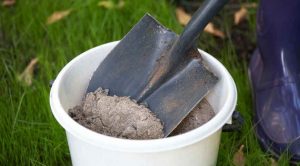 Before you use the ash, you need to check its origin. In the garden, only that obtained from burning plant residues is used. Otherwise, there is a high risk to provoke a seedling burn. The second risk factor is associated with elevated levels of heavy metals. All types of ash produced by burning non-vegetable components can be fully called poison. Even after 1-2 treatments, the fruits will become inedible. After studying the source of the ash, you need to pay attention to its type. There are several of them:
Before you use the ash, you need to check its origin. In the garden, only that obtained from burning plant residues is used. Otherwise, there is a high risk to provoke a seedling burn. The second risk factor is associated with elevated levels of heavy metals. All types of ash produced by burning non-vegetable components can be fully called poison. Even after 1-2 treatments, the fruits will become inedible. After studying the source of the ash, you need to pay attention to its type. There are several of them:
- coniferous;
- leafy;
- shale - the maximum level of calcium;
- resulting from the processing of bread, cereals;
- peat;
- derived from buckwheat straw;
- derived from sunflower stalks.
On a note!
Each of these varieties is used taking into account the actual needs of the seedlings in the nutrient elements.
How to get ash for fertilizer
 The basis is taken, as mentioned earlier, of plant origin. It is necessary to burn dry straw, twigs, leaves of coniferous and hardwood trees. Another 1 method of obtaining natural fertilizer is the use of coal, which remains after the combustion of logs of large sizes. The best option is to use fern leaves and sunflower stalks. The resulting mixture contains almost all the necessary nutrients to tomatoes. Peat ash is considered the least useful.
The basis is taken, as mentioned earlier, of plant origin. It is necessary to burn dry straw, twigs, leaves of coniferous and hardwood trees. Another 1 method of obtaining natural fertilizer is the use of coal, which remains after the combustion of logs of large sizes. The best option is to use fern leaves and sunflower stalks. The resulting mixture contains almost all the necessary nutrients to tomatoes. Peat ash is considered the least useful.
One of the most common ways to get ash is as follows:
- To burn vegetable raw materials you need in containers made of metal. Barrels and crates will fit, the volume of which ranges from 150 to 200 liters.
- The necessary resource is easy to accumulate on their own. Regular collection of fallen leaves will provide the gardener with a sufficient amount of ash.
- It is important to ensure that moisture does not get into the tank in which the burning of plant materials is carried out. Otherwise, the finished resource is deprived of most of the useful qualities.
- The finished ash must be sieved. A sieve with a mesh size of about 10 mm is used.
The ash prepared in this way is placed in sealed bags. In them it is stored in a dark and dry place for no more than 6 months.
Important!
It is necessary to remember about security measures. After completion of the procedure for collecting the ash should pay attention to its color. If it has a pronounced red tint, then it is prohibited to use it. Otherwise, an excessive level of iron concentration will damage the plantings.
Top dressing at different stages of growing
 In gardening, ash as a fertilizer has been used for a long time, so many people know how to use it for tomatoes. For the prevention of diseases and fertilizing used dry matter, infusions and solutions prepared based on it. In the dry form, ash is introduced at the stage of transplantation or initial disembarkation. Ash sprinkled topsoil. The recommended dosage is 3 tablespoons per 10m2. In the liquid form, ash is applied with the onset of active growing season.
In gardening, ash as a fertilizer has been used for a long time, so many people know how to use it for tomatoes. For the prevention of diseases and fertilizing used dry matter, infusions and solutions prepared based on it. In the dry form, ash is introduced at the stage of transplantation or initial disembarkation. Ash sprinkled topsoil. The recommended dosage is 3 tablespoons per 10m2. In the liquid form, ash is applied with the onset of active growing season.
The recipe of the solution is as follows:
- 300 g of dry matter;
- sift it thoroughly;
- pour 10 liters of water;
- boil;
- boil on medium heat for 30 minutes;
- cool and insist 24 hours;
- drain the decoction;
- pour it into a bucket, the capacity of which is 10 liters.
The mixture is supplemented with 40 g of soap. Everything is stirred until smooth. Processing is carried out up to 4 times in 1 season.
Use ashes for seedlings tomato
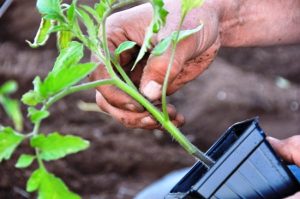 Substance is introduced during the digging of the earth. The intensity of application depends on the predominant type of soil. If it is heavy, then it is recommended to make ash at least 2 times in autumn and spring. Owners of light soils are limited to 200 g per 1m2, applied 1 time in spring. Under greenhouse and open ground conditions, ash is valid for 2 to 3 years. The concentration of beneficial bacteria increases. Tomato seedling quickly mastered in a new place. The recommended method of application is to scatter the dry matter around the bushes or to treat the leaves and stem with a solution. For its preparation take 1 teaspoon of ash per 1 liter of water.
Substance is introduced during the digging of the earth. The intensity of application depends on the predominant type of soil. If it is heavy, then it is recommended to make ash at least 2 times in autumn and spring. Owners of light soils are limited to 200 g per 1m2, applied 1 time in spring. Under greenhouse and open ground conditions, ash is valid for 2 to 3 years. The concentration of beneficial bacteria increases. Tomato seedling quickly mastered in a new place. The recommended method of application is to scatter the dry matter around the bushes or to treat the leaves and stem with a solution. For its preparation take 1 teaspoon of ash per 1 liter of water.
On a note!
Since the beginning of the active growing season increases the importance of ash.
Practical tips for using it are as follows:
- The first application - at the stage of preparing the soil for digging. Given the acidity of the soil, we are talking about 700-1500
- Planting tomatoes in the greenhouse - the substance is introduced directly into the hole. The recommended dosage is 3 tablespoons. Over the specified volume pour 5-6 cm of soil.
- The use of ash as a fertilizer - the flow rate ranges from 100 to 150 g per 1m2. It all depends on the level of acidity of the soil. After fertilization, the soil is loosened and watered.
- Liquid feeding - applies only to the processing of ripe tomatoes. 100 g of ash powder diluted in 10 liters of water. The mixture is infused for 5 hours. 0.5 liters is poured under each bush.
The solution on the ash is used for feeding the leaves. To enhance the effect of household soap, which is rubbed on a coarse grater (two bars).
How to apply to open ground and greenhouses
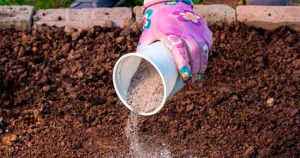 The first application on the open ground occurs at least 2 times within 1 year. For the first time, processing is carried out before digging, and then - after the harvest of tomatoes. The next treatment is after the snow melt. It is necessary to make sure that the earth is well warmed up. An important role is played by properly selected dosage. Each 1m2 of open ground requires 200 g of dry ash. It has been proven that such processing increases yields and makes tomatoes less susceptible to external negative factors.
The first application on the open ground occurs at least 2 times within 1 year. For the first time, processing is carried out before digging, and then - after the harvest of tomatoes. The next treatment is after the snow melt. It is necessary to make sure that the earth is well warmed up. An important role is played by properly selected dosage. Each 1m2 of open ground requires 200 g of dry ash. It has been proven that such processing increases yields and makes tomatoes less susceptible to external negative factors.
Preliminary soil preparation will help reduce the likelihood of crop loss. In a temperate climate, 1 st. spoon of dry matter.
When using ash in the greenhouse, attention should be paid to the following nuances:
- places of cuts and breaks are treated with ash powder - it accelerates regeneration;
- during flowering, the soil around the bush is sprinkled with ashes - ½ cup per 1m2 of beds;
- after abundant watering 50 g of ash powder are added under each bush;
- ash should not be used if the ph of the soil exceeds "7";
- it can not be added to fresh compost of plant origin;
- the emphasis is on root dressing - 0.5 l of liquid ash solution is required for each bush.
Important!
Regardless of whether it is a question of an open ground or a greenhouse, it is necessary to strictly follow the recommended dosage. Tomatoes are sensitive to all the substances introduced. Even a minor mistake will lead to an imbalance of nutrients in the soil. Do not forget that the excess ash powder is not the best way reflected on the Ph level of the soil.
Ash treatment
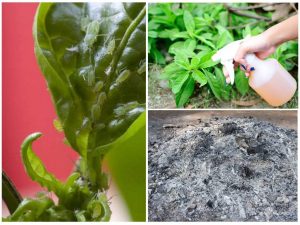 Operational and correct actions of the gardener do not allow the disease to destroy the crop. Before resorting to a particular therapeutic agent, conduct a detailed inspection of seedlings:
Operational and correct actions of the gardener do not allow the disease to destroy the crop. Before resorting to a particular therapeutic agent, conduct a detailed inspection of seedlings:
- Black leg - you need to increase the amount of incoming sunlight. Slightly increase the temperature in order to reduce the level of moisture content in the soil. Then the ground around the bush sprinkled with ashes.
- Phytophthora - helps foliar feeding. The first powder is performed at the beginning of summer, and the last one - at the moment of the beginning of the ovary of the fruit.
- Fungal lesion - the amount of treatment carried out depends on the location of the seedlings. In the greenhouse ash is processed bush and walls. In the open field it is enough to sprinkle with ashes only a bush.
It has been scientifically proven that for the prevention and treatment of fungal lesions, oak or maple ash should be used. In other cases, the effectiveness of the procedure leaves much to be desired. For therapeutic purposes, treatment is carried out 2 times a week until the harvest of tomatoes.
Pest protection
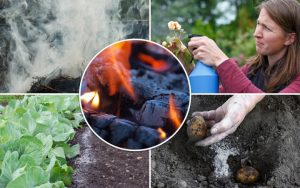 For prophylactic purposes, the liquid form is used. Processing is carried out 1 time every 14 days. Each plant is poured under the root of the infusion of ash. As a result, the growth of tomatoes is accelerated, and their protective properties are increased. The recipe of cooking is as follows:
For prophylactic purposes, the liquid form is used. Processing is carried out 1 time every 14 days. Each plant is poured under the root of the infusion of ash. As a result, the growth of tomatoes is accelerated, and their protective properties are increased. The recipe of cooking is as follows:
- 1 cup of ash poured into a bucket;
- add 10 liters of water;
- Insist 48 hours - it is desirable to mix the solution every 6 hours.
On a note!
The resulting mixture is poured into the sprayer. Another recipe involves the use of ash decoction. For its preparation will need 300 g of dry ash and 2 liters of boiling water. Everything is mixed in a deep container.
The following procedure is as follows:
- put on medium heat;
- boil for 25 minutes;
- remove from heat and allow to cool;
- Slowly strain;
- the resulting solution to dilute 10 liters of pure water;
- add 50 g grated on a large grated soap.
The mixture is effective for the prevention and treatment. The recommended dosage is 2 liters per bush. If in the greenhouse or in the open ground the risk of activation of slugs and caterpillars appeared, then 10-15 g of ash powder are scattered around each bush.
Conclusion
Ash - a natural source of many useful substances. Its regular and metered use reduces the likelihood of activation. pests and diseases. Tomato growth is accelerated. Before resorting to ash, you need to make sure it is safe. The choice is made in favor of the ash obtained by burning organic substances of plant origin only.


